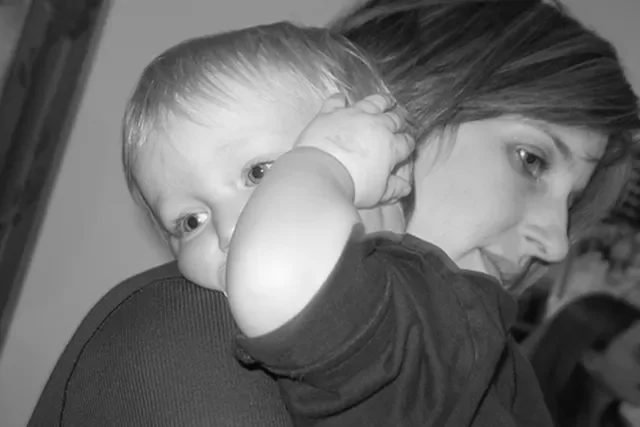Babies and toddlers frequently have ear infections. In fact, five out of every six kids will get an ear infection before they turn three, according to the National Institutes of Health. Many parents consult ENT Specialists in Kochi Kerala when symptoms become recurrent or severe, as early care can prevent complications.
Many parents fear that an ear infection may have an irreversible impact on their child's hearing or that it will go unnoticed and untreated. The good news is that the majority of ear infections resolve on their own, and those that do not are usually simple to treat. Seeking timely evaluation at an ENT Hospital in Kochi Kerala can also help rule out underlying issues.
Understanding ear infection in children
Inflammation in the middle ear, which links to the back of the nose and throat, where germs are typically trapped, is what causes ear infections. Otitis media, the most typical kind of ear infection, happens when fluid accumulates behind the eardrum and is the middle ear.
The eustachian tubes are the route via which germs can enter the middle ear when your kid has a sore throat, cold, or upper respiratory illness (the channels that connect the middle ear to the throat). Behind the eardrum, fluid accumulates as a result of the infection.
Furthermore, the following two factors make children more susceptible to ear infections than adults.
- Their eustachian tubes are more horizontal and narrower, which makes it more challenging for fluid to exit the ear.
- They have underdeveloped immune systems that are less capable of warding off diseases.
Even when there is no infection, a glue like fluid can occasionally become trapped in the middle ear for extended periods of time.
Signs and symptoms of ear infection in children
The discomfort in and around the ear is the clear indication of an ear infection. Ear infections often strike young toddlers before they can speak. As a result, parents frequently have to speculate as to why their child seems to be struggling. The following 5 indicators point to an ear infection as the potential cause when your kid is unable to express that their ear hurts:
Irritability and refusing to sleep
If your child is unusually cranky and keeps crying, it can be a possible indication of ear infection. Refusing to sleep and crying uncontrollably when put to sleep flat on the back are also strong indicators.
Refusing to eat
Loss of appetite is a major sign, as a child with ear infection can hardly eat due to the pain while chewing food and also general discomfort.
Pulling their ears
Infants, as they cannot talk, might express their discomfort in many ways. They might pull their ears to show that it is paining, especially during feeding as swallowing/ sucking creates more pressure in the ear.
Pus-like discharge
If you notice any kind of discharge, pus-like (white/ yellow) or blood-tinged, coming out of the ear, seek immediate medical attention.
Fever
Fever is a sign that one’s body is fighting an infection. If the above symptoms are accompanied by high-temperature, it is very likely that the child is indeed suffering from an ear infection.
Ear infection in children treatments
The majority of ear infections resolve on their own. Your doctor could advise a "wait-and-see" strategy along with over-the-counter painkillers if your child is not in excruciating pain in order to see whether the infection will go away on its own.
The reason is that using antibiotics to treat an illness runs the risk of making the bacteria that causes infections resistant to those medications, which will make treating subsequent infections more challenging. Importantly, antibiotics are typically not required. Without them, otitis media often gets better. Even though you might be tempted, homoeopathic or natural remedies haven't been well researched as ways to treat ear infections in children.
Working with your child's doctor to choose the best course of action is your best option. Treatment options are determined almost always by the child's age, level of discomfort, presenting symptoms are the presence of underlying medical issues.
If the child is under 6 months
Antibiotics are generally always given to infants under six months of age. Children are not fully immunised at this age. Additionally, since ear infections in young newborns can have more serious repercussions, there is no data on the safety of avoiding antibiotics for babies under the age of six months. Bacteria that becomes trapped behind the eardrum can travel to other body areas and result in life-threatening illnesses.
If your child is between the ages of 6 months – 2 years
The American Academy of Pediatrics (AAP) advises parents and healthcare professionals to collaborate when deciding whether to treat mild ear infections in children between the ages of 6 months and 2 years. The best course of action is frequently to wait two to three days before giving antibiotic therapy for the youngster. Your kid's doctor could advise beginning rapid antibiotic therapy if the youngster is in discomfort or if the ear infection is advanced.
If your child is above 2 years
Ear infections in children older than two are likely to go away on their own, without needing to be treated. In the meanwhile, you can manage your discomfort with over-the-counter drugs like acetaminophen or ibuprofen. Antibiotics may be necessary if there is no improvement after two to three days.
Unfortunately, some kids get ear infections repeatedly, up to five or six times a year. Children who experience recurrent infections may benefit from surgery in which tiny tubes are inserted into the eardrums to enhance airflow and avoid fluid accumulation. While tubes can't stop every ear infection, they certainly make controlling them much simpler.
Check for Adenoid therapy
In children believe the age of 2-10 years the tonsil situates in the throat behind the non – Adenoid can get enlarge resulting in obstruction of the Eustachian tube and middle ear. In case of significant enlargement of the adenoid gland it has to be treated medically or surgically.
How to prevent ear infections in children?
You can do a number of things to lessen the possibility that your child will get ear infections, such as:
Consider breastfeeding: The antibodies in breast milk may help lower the incidence of ear infections and a variety of other illnesses. Make sure your kid sits up during feedings, whether you give them milk or formula, to stop fluid from entering their middle ear.
Vaccinate your child: Children with current immunizations get less ear infections than their immunised peers. The PCV13 vaccination, which protects against 13 different kinds of infection-causing bacteria, is 13-valent.
Avoid ill individuals at all costs: Don't let your youngster interact with sick kids or adults.
Wash your hands frequently: Keeping your hands clean will help to prevent your child from colds and flu. Every time you use the sink, wash your hands thoroughly for 20 seconds with soap and water.
Avoid secondhand smoke: Research indicates that children who are exposed to secondhand smoke have a threefold increased risk of developing ear infections.
Finally, make sure your youngster can hear well whether or not they have ear infections. No kid is too young to get their hearing checked.
Remember, chronic ear infection can recur and frequent ear infections can even lead to hearing loss. Hence it is always advisable to consult a paediatrician immediately, however mild the symptoms may be.







